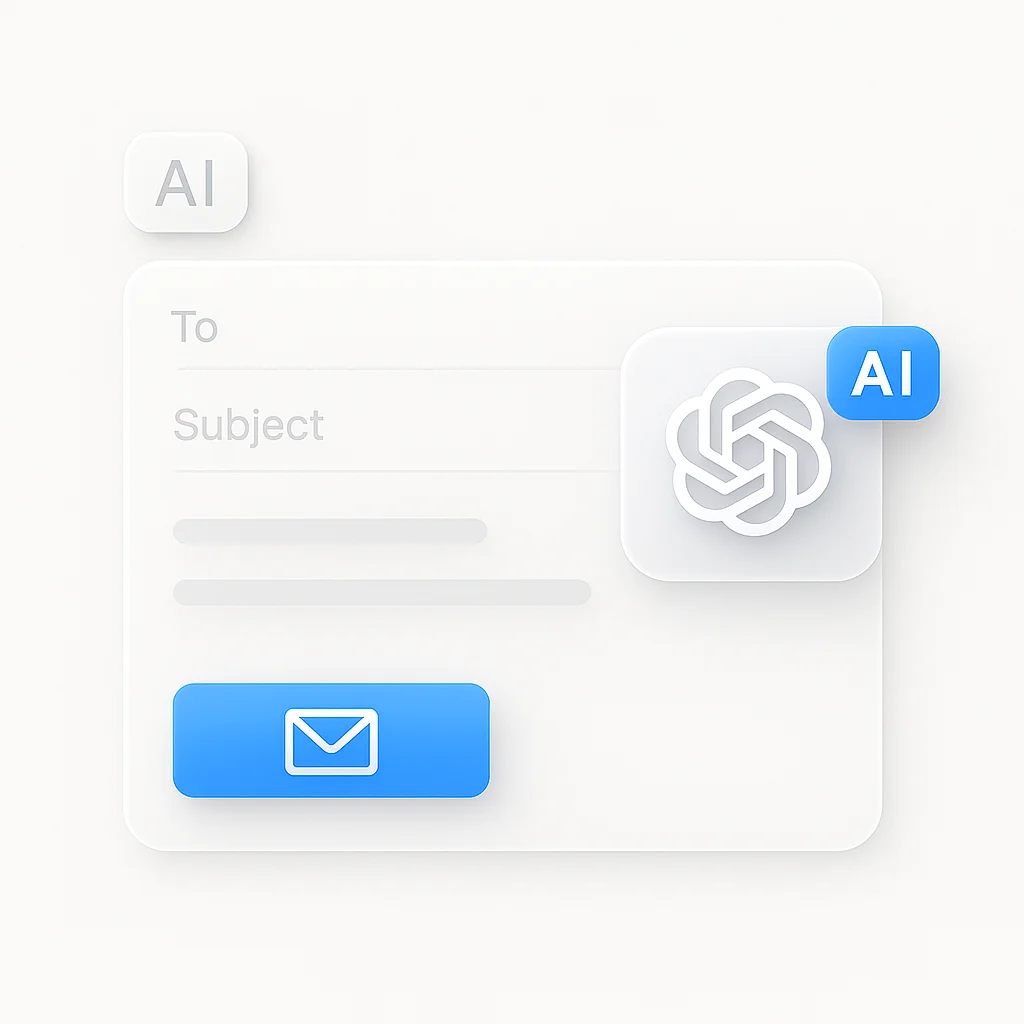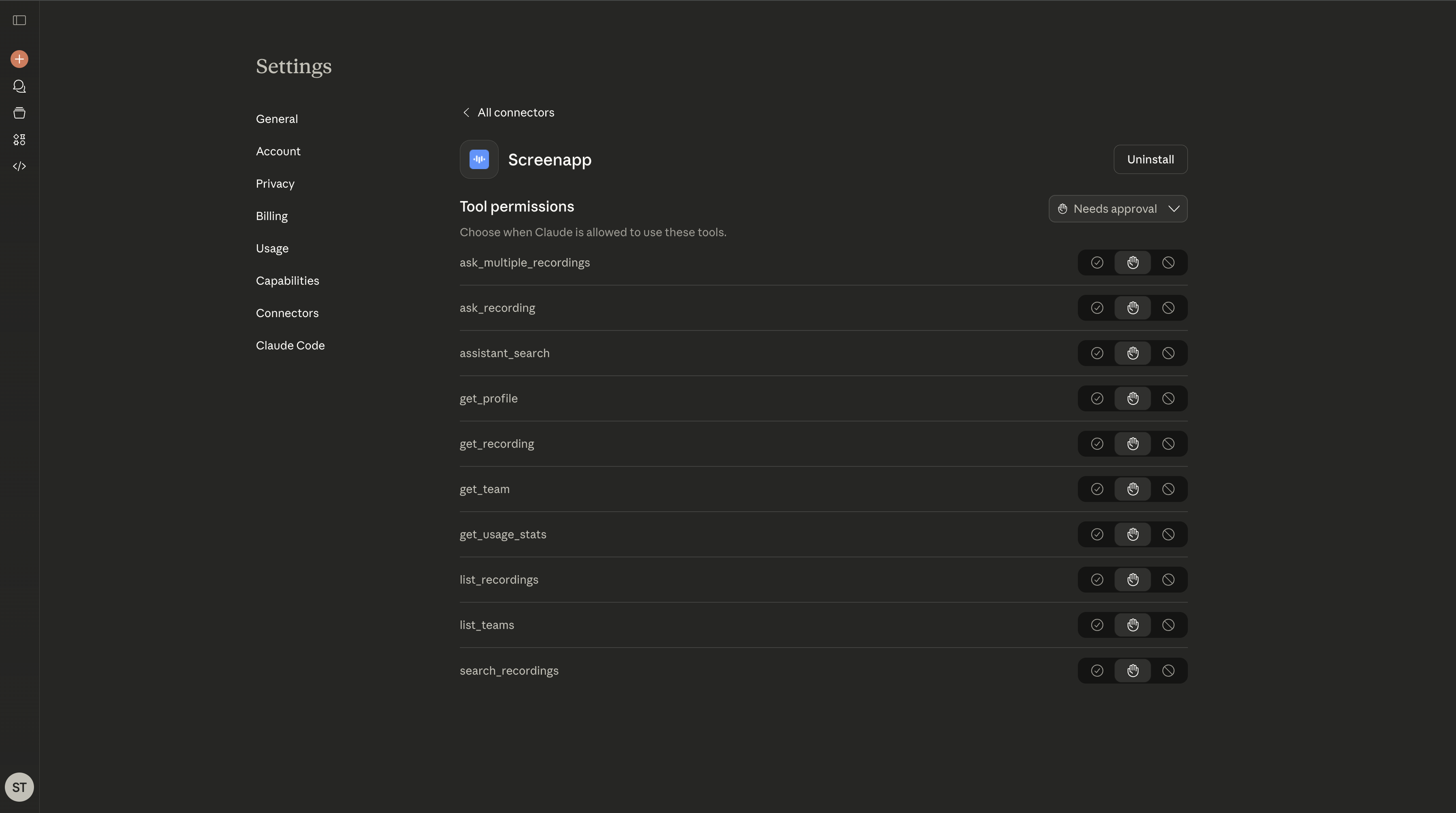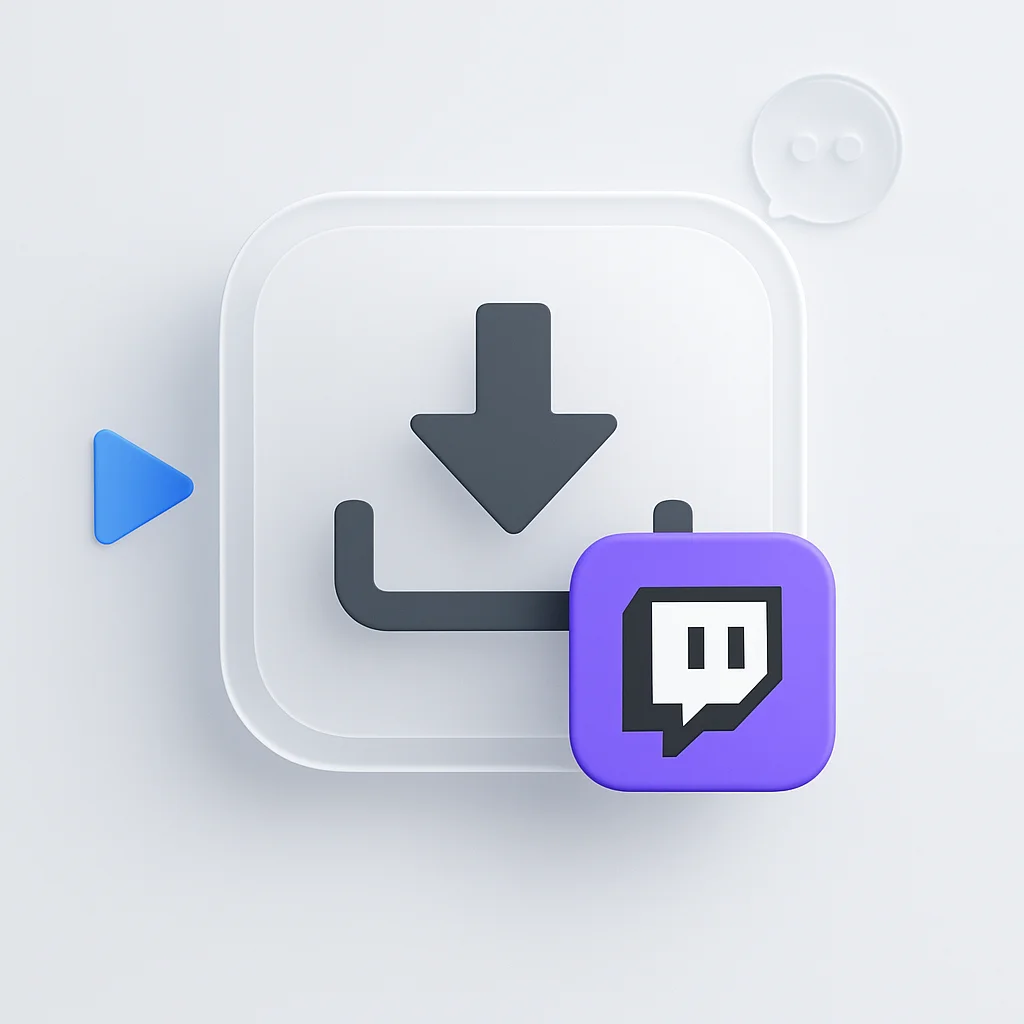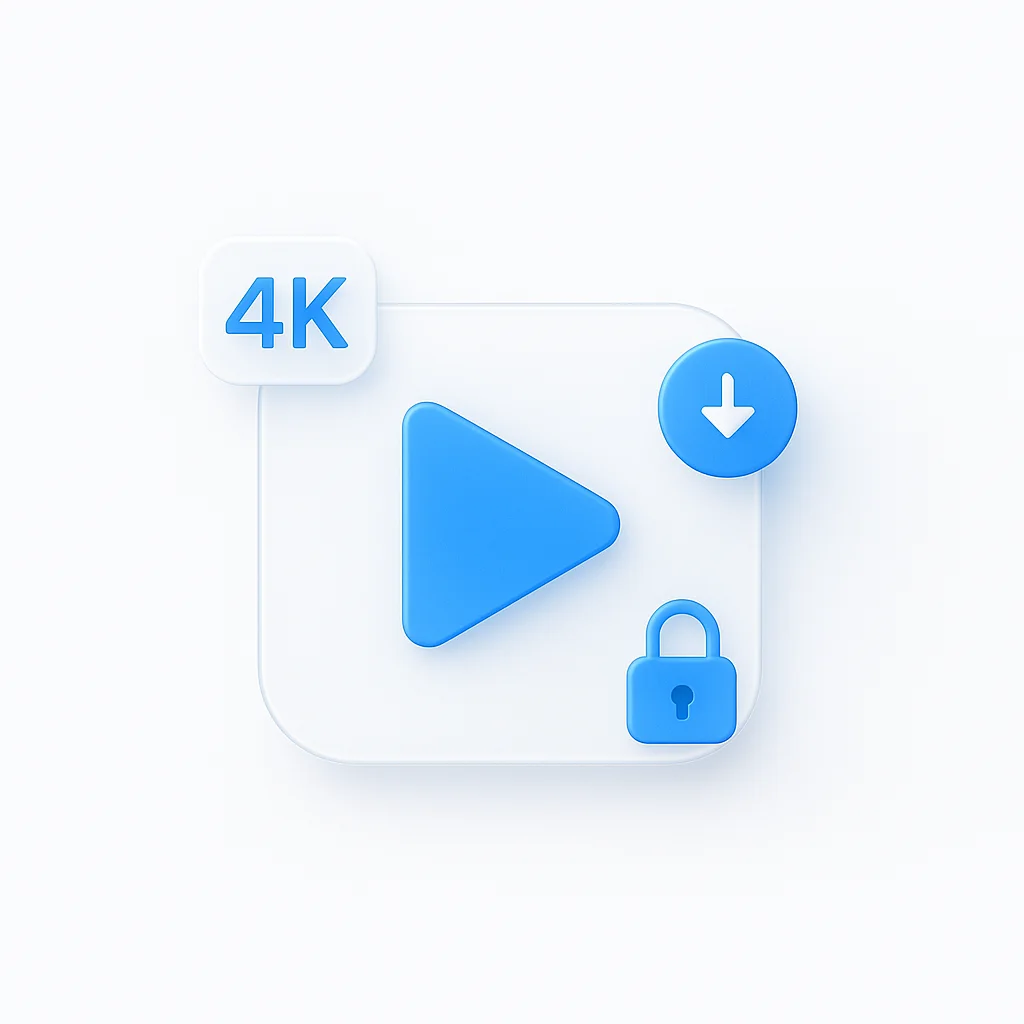Staring at a blank email draft, trying to find the perfect words? ChatGPT can be your secret weapon for conquering your inbox. Whether you need to write a professional request, craft a persuasive sales pitch, or simply reply faster, ChatGPT transforms into a versatile, free ai email writer that works 24/7, a capability that even many ai leaders now rely on to streamline communication and maintain consistency in their daily workflows.
According to recent workplace research, professionals spend an average of 4.1 hours per day checking and responding to emails. With the right chatgpt prompts, you can cut that time in half while improving the quality of your communications.
This guide provides everything you need: the prompt engineering formula that works, plus 15+ copy-paste chatgpt prompts for writing emails that you can use immediately.
Quick Answer: The Perfect ChatGPT Email Prompt Formula
The Winning Formula
Master this structure for perfect ChatGPT email prompts every time
💡 Real Example:
The Art of the Perfect Email Prompt: 4 Key Ingredients
Getting great results from ChatGPT as an email writer gpt requires understanding how to communicate with AI effectively. Think of it like giving instructions to a skilled assistant who can help you, but needs clear direction.
State Your Goal
Be specific about what you want ChatGPT to do with your email.
Provide Context
Give ChatGPT all the necessary details to write accurately.
- • Who: Recipient name and role
- • What: Subject matter and key points
- • When: Relevant dates or deadlines
- • Why: Purpose and desired outcome
- • Background: Previous conversations or context
Define the Tone
Specify how you want the email to sound.
Set Constraints
Add specific rules or limitations for the output.
- → "Keep it under 100 words"
- → "Use bullet points for clarity"
- → "Do not mention pricing"
- → "Include a clear call-to-action"
- → "End with a specific question"
For professionals who need to document their email workflows or create training materials, screen recording tools can capture your ChatGPT prompting process to share with your team.
15+ Copy-Paste ChatGPT Prompts for Every Email Situation
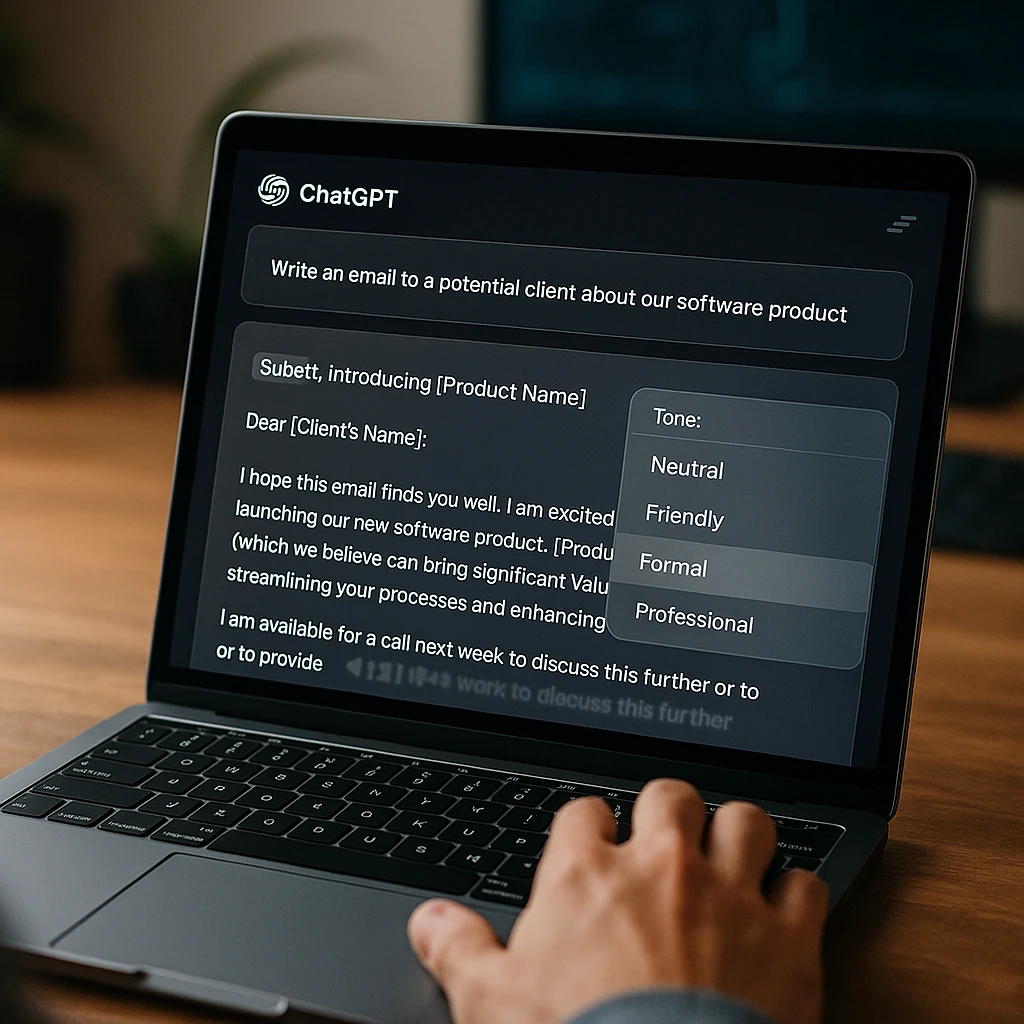
Ready to transform ChatGPT into your personal ai email writer? Here are battle-tested prompts organized by situation. Simply copy, customize with your details, and paste into ChatGPT.
Prompts for Composing New Emails
Draft a formal email to [Recipient Name] at [Company] requesting [specific information or action].Include these points:
- [Key point 1]
- [Key point 2]
- [Key point 3]
Keep the tone professional and respectful. Limit the email to 150 words.
Write a persuasive cold outreach email to a potential client in the [Industry].Introduce my company, [Your Company], and our solution, [Your Product/Service], focusing on the benefit of [Key Benefit].
Tone: Professional but warm and conversational Length: 120-150 words Include: A clear call-to-action asking for a 15-minute call
Write a polite follow-up email to [Recipient Name] regarding our meeting on [Date].Briefly summarize our discussion about [Topic] and ask about the next steps.
Tone: Friendly and professional Include: A specific question to prompt a response Keep it under 100 words
Draft a short, friendly email introducing myself to [Person's Name], a [Their Job Title].Mention that we were both at [Event] or that I admire their work in [Their Field].
Express interest in: [Specific topic you’d like to discuss] Tone: Warm, genuine, and respectful of their time Length: 80-100 words maximum
Write a sincere thank you email to [Recipient Name] for [their help/the interview/their time/the opportunity].
Mention specifically: [What you’re grateful for] Reference: [A memorable moment or insight from your interaction] Tone: Warm and genuine Length: 60-80 words
Prompts for Replying to Emails
Here is the email I received: [Paste the email]Draft a positive and professional reply confirming my agreement with the proposed plan and stating that I am ready to proceed.
Tone: Professional and enthusiastic Include: Next steps or timeline if applicable Length: 50-75 words
Here is an email asking me to [do something]: [Paste the email]Draft a polite but firm reply explaining that I am unable to fulfill this request at this time due to [brief reason, e.g., current workload, scheduling conflicts].
Tone: Respectful and apologetic but clear Offer: [Alternative solution if possible] Length: 75-100 words
Draft a reply to the email below asking for clarification on [specific point 1] and [specific point 2].Original email: [Paste the email]
Tone: Professional and curious Format: Use numbered questions for clarity Length: 60-80 words
If you’re managing multiple email conversations and need to keep track of action items, AI note-taking tools can help you extract and organize key points from email threads automatically.
Prompts for Rewriting & Improving Your Drafts
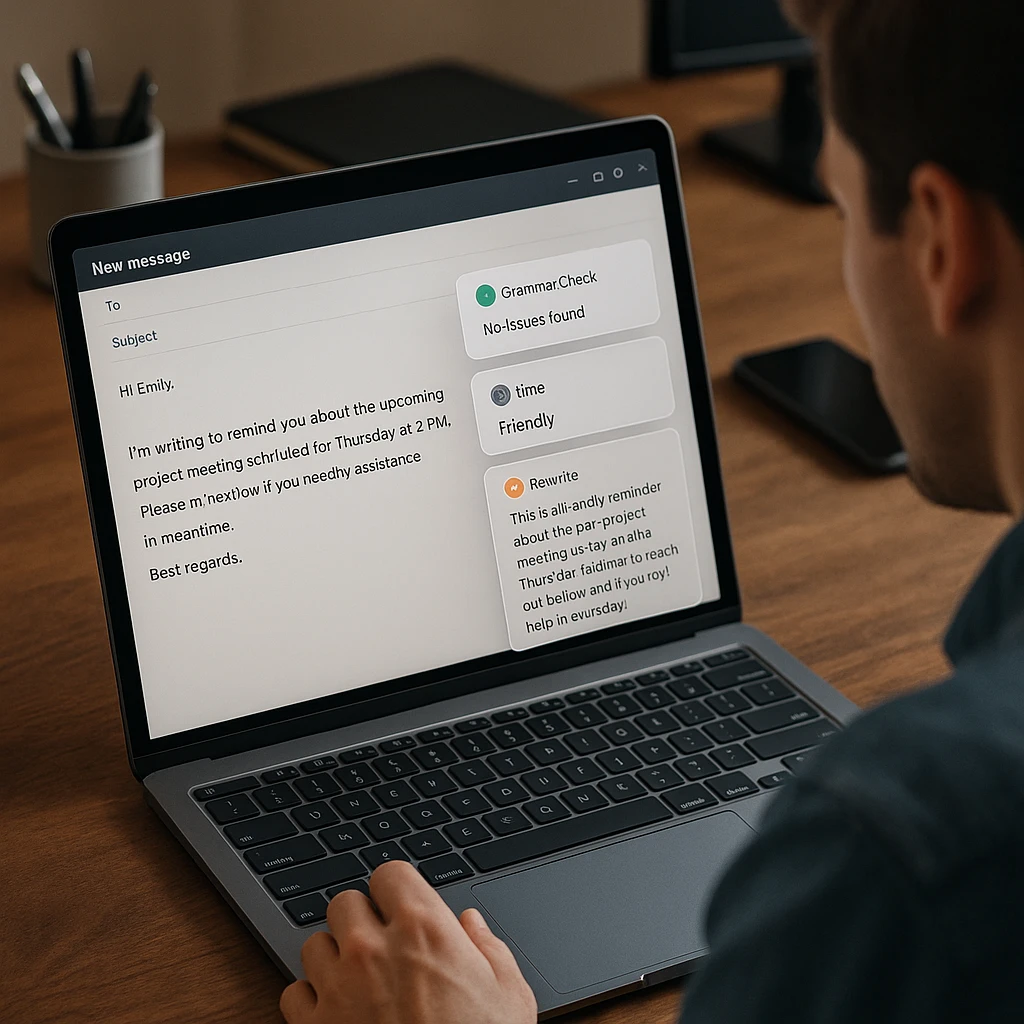
Rewrite the following email draft to be more formal and professional:[Paste your draft]
Keep the same key points but elevate the language and tone. Remove any casual expressions or slang.
Shorten the following email to be under 100 words while keeping the main points:[Paste your draft]
Remove redundancy and filler words. Make every sentence count.
Rewrite this email to have a more [friendly and enthusiastic / formal / apologetic / persuasive] tone:[Paste your draft]
Adjust the language and word choice to better match the desired tone while maintaining the core message.
Proofread the following email for any grammar, spelling, or punctuation errors. Also check for clarity and flow:[Paste your draft]
Provide the corrected version and list any significant errors you found.
Advanced Prompts
Summarize the key points and action items from the following email thread:
[Paste the email thread]
Format the summary as:
-
Main decisions made
-
Action items (who is responsible for what)
-
Open questions or next steps
Important deadlines
Generate 5 clear and compelling subject lines for an email about [Topic].The email is for: [Audience] The goal is: [Desired action or outcome]
Make them concise (under 60 characters) and action-oriented.
Create a reusable email template for responding to [situation, e.g., customer support inquiries about shipping delays].Include:
- Professional greeting
- Acknowledgment of the issue
- Clear explanation
- Solution or next steps
- Apology if appropriate
- Professional closing
Use [placeholders] for customizable information.
Translate the following email into [Language] while maintaining a professional tone:[Paste your email]
Ensure cultural appropriateness and business etiquette for [target country/region].
For teams that need to create training materials on using ChatGPT for emails, consider using screen recording combined with AI video summarization to document best practices and share them across your organization.
Pro Tips for Better ChatGPT Email Results
Be Specific
The more details you provide, the better the output. Include names, dates, and specific goals.
Iterate
Don't accept the first draft. Ask ChatGPT to "make it more concise" or "add more enthusiasm."
Personalize
Always review and add personal touches. AI provides structure, you provide authenticity.
Save Templates
Create a personal library of your best-performing prompts for repeated use.
Teach Your Voice
Paste examples of your writing and ask ChatGPT to match your style.
Use Follow-ups
Build on ChatGPT's responses with refinement requests in the same conversation.
Frequently Asked Questions
By default, OpenAI may use your conversations to train their models unless you opt out. Avoid pasting sensitive personal, financial, or confidential company information into the standard ChatGPT interface.
Safer Alternatives:
- Use ChatGPT API with data privacy controls
- Subscribe to ChatGPT Enterprise for business use
- Turn off chat history in settings
- Anonymize sensitive details before pasting
Yes! You can train ChatGPT to adopt your writing style by providing examples. Try this prompt:
"Analyze the following email I wrote and adopt its tone and style for your future responses:[Paste your email]
Now, using that same style, write an email to [recipient] about [topic].”
The fastest workflow combines clear prompts with quick iteration:
According to productivity research, professionals using AI writing tools save an average of 30-40% of their email composition time.
Yes, ChatGPT offers a free tier that works excellently for email writing. The free version includes:
✅ Free Version
- GPT-3.5 model access
- Unlimited messages (with rate limits)
- All prompt types supported
- Perfect for most email needs
⭐ Plus ($20/mo)
- GPT-4 access (better quality)
- Faster response times
- Priority access during peak times
- Custom GPTs for email templates
The most effective professional email prompts include clear structure and specific constraints. Here are the top-performing categories:
| Email Type | Key Elements | Success Rate |
|---|---|---|
| Executive requests | Formal tone + brevity + clear ask | High |
| Client proposals | Professional + value-focused + CTA | High |
| Team updates | Clear + bullet points + action items | High |
| Follow-ups | Brief + reference previous + question | Medium |
For more tips on using AI tools effectively in your workflow, check out our guide on the best AI email writers of 2025 to see how ChatGPT compares to other options.
Conclusion: Your Personal Email Writing Assistant
By mastering the art of the prompt, you can transform ChatGPT from a fun novelty into an indispensable ai email writer. The 15+ prompts in this guide are your starting point, but the real power comes from adapting them to your specific needs and communication style.
Quick Wins to Start Today
Start Simple
Use the "Formal Request" or "Thank You" prompts for your next email. Build confidence with easy wins.
Create Your Library
Save your 3 most-used prompts in a note app. Customize them once, reuse them forever.
Teach Your Style
Paste 2-3 of your best emails and ask ChatGPT to match your tone. Watch it learn your voice.
Ready to reclaim hours from your inbox?
Start with one prompt from this guide today. The time you save compounds quickly when you make AI email writing a daily habit.
Remember: ChatGPT is a tool, not a replacement for human connection. Use it to handle the structure and grammar, but always add your personal touch. The best emails combine AI efficiency with human authenticity.
According to Gartner predictions, by 2027, AI writing assistants will be standard in 70% of professional communication workflows. Start building your skills now to stay ahead.
For teams looking to document their ChatGPT email workflows for training purposes, explore how video-to-text conversion can help you create comprehensive guides from recorded tutorials.
